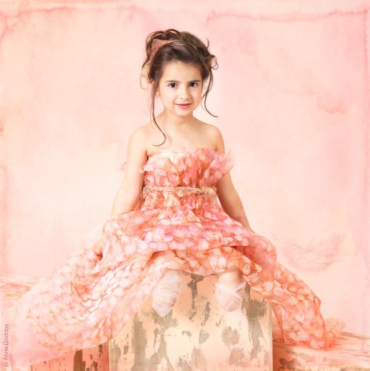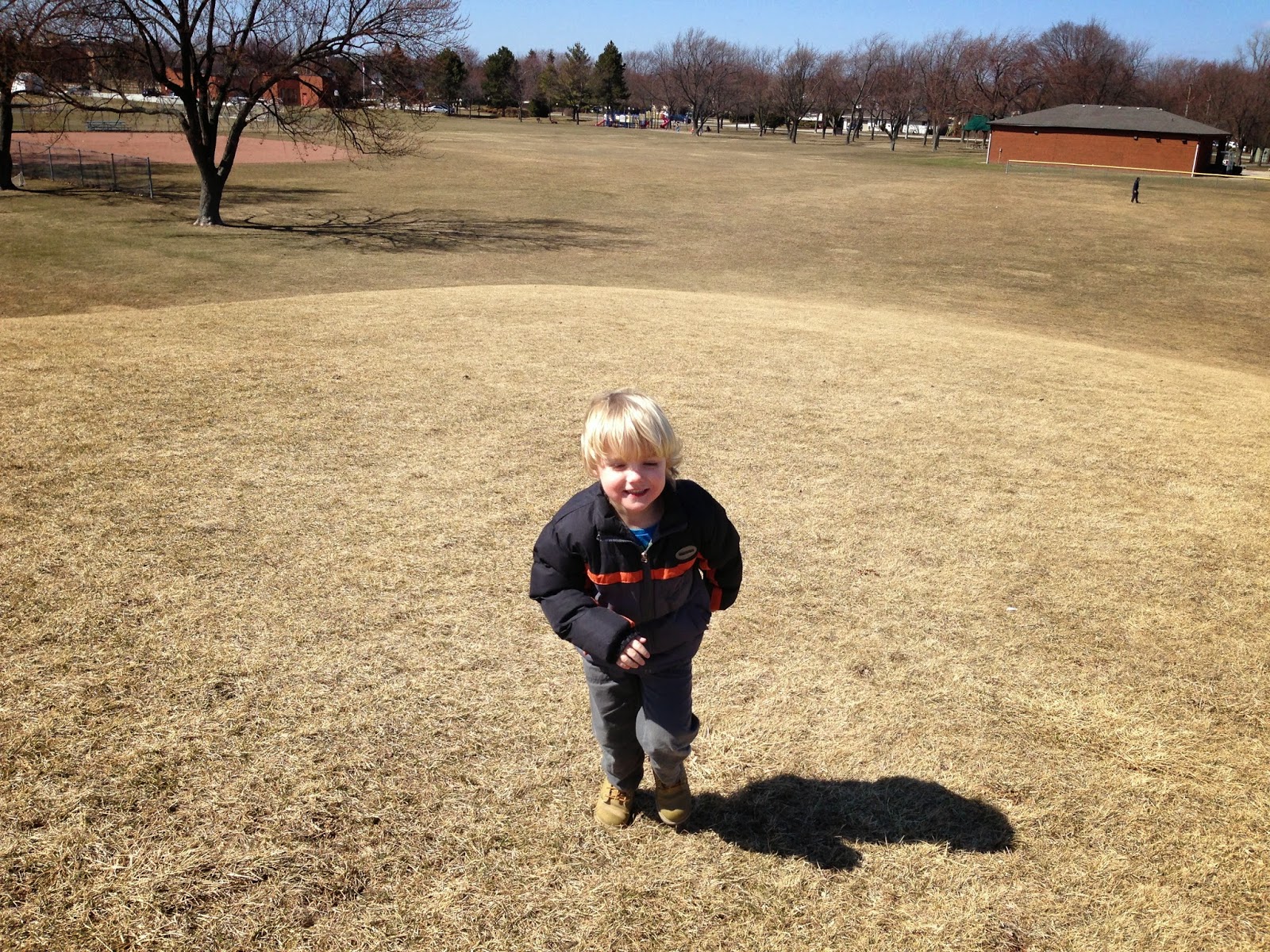By Kara Melissa Sharp
When
I first heard about the Upsee, I knew I
wanted to be a part of the trial. A device that would allow Sebastian to walk
with me, attached to a vest and harness, just made sense. Ever since he was a
baby and first started to bear weight and walk, we were holding him up.
He does
not have the upper body strength to do it on his own, his muscles cannot work
together and give him the balance and strength he needs, so we were that
strength.
Hunched over, we held him up, hands under his torso, so he
could move one leg in front of the other, because that’s what babies and
toddlers do. They learn to walk. We were so excited at his ability to move his
legs but what made us happier was his own happiness and the excitement he felt
with each step.
Fast
forward to today. Sebastian is almost six years old and uses a wheelchair to get
from one place to the next. He also uses his Kid Walk walker to walk the halls
at school and around our home on the weekends. He especially likes walking
outside in the summertime and kicking a soccer ball around. Although his Kid
Walk does have a fairly open front, he is still very well supported, which
means he’s surrounded by the equipment itself. He still gets excited with each
step and loves moving around. It give him a sense of independence.
But we can’t
take his walker everywhere. He can’t get up a hill in it. It doesn’t fit in our
car with his wheelchair and luggage when we take a road trip to see his
grandparents and cousins every few months. It stays at school during the week.
This piece of equipment that gives him independence, as well as therapeutic
exercise, has its limitations. When we take a walk to the park as a family,
Sebastian is in his stroller and his dad gets him out and helps him walk from
the swings to the slide. He is hunched over, hands under Sebastian’s arms,
holding him up. He then goes down the slide with him, or sits on the swing with
him.
Including
Sebastian in everyday activities that all children his age experience is
important to us. We modify whatever we need to to make it work. As Sebastian
grows, even though he loves to cuddle, he doesn’t necessarily want to be
carried everywhere. As a young child, it’s also important to me that he’s not
in his wheelchair all the time. Especially when he was in pre-school and his
peers would often engage in play at floor level. I want him to be in different
positions to help him grow and develop. I want him to be invited and included
in his peer groups whenever possible.
Enter
the Upsee. A product invented by a mom whose son also has cerebral palsy. A mom
who wanted to walk around the neighbourhood with her son, but didn’t have
access to equipment like a Kid Walk. A mom who wanted her son to learn what his
legs were and what they could do. A mom who wanted to go camping and involve
her son in family activities.
The Upsee is a vest, harness, waist belt and
double set of sandals. It is a device that allows a child to stand tall, while
being connected to a parent who holds them up, hands free. Both feet are side
by side and the action is similar to a child standing on your feet to dance,
but they are parallel instead. You work together to walk together. But your
arms are free, and your child is facing the world, no barriers.
The
first time I used it, I struggled. I wanted to walk and I wanted Sebastian to
walk. Instead, I had to wait for his cues. I had to be patient and let his feet
take the lead. Otherwise we wouldn’t be in sync. Once I realized this, I could
feel his left leg struggle since his hip is somewhat displaced. I felt his
right leg leap forward with ease. And we walked around our home.
We walked
through places that his walker doesn’t fit. He saw things from a different
perspective. We counted steps and he got excited, picking up the pace a bit.
When he tired, we stopped and stood together for a break. As we did so, his
younger sister came toddling up to him, threw her arms around him and gave him
a big bear hug. After the shock of such a spontaneous interaction between my
children, I helped him hug her back. The following week, his sister asked me to
stand Sebastian up every day when he came home from school so she could hug
him. She can’t hug him when he’s in his walker. And often, she’s trying to help
push and steer him. When he’s in the Upsee, she comes and grabs his hand
and walks next to him.
Recently,
I was invited to attend the Upsee launch in Northern Ireland with a group of
other parent bloggers. I took my family and the Upsee with me. We decided to
make it a family holiday and did some touring around, including a trip to the
coast and the Giants Causeway, which is full of hexagonal shaped rocks leading
into the water, like a bridge trying to connect Ireland and Scotland. Although
the path to the Causeway was paved and accessible by bus, we chose to take
Sebastian in the carrier and brought the Upsee along with us. Once there, he
was able to walk along the rocks with his dad (see photo above). I also carried him on my back in
a carrier and enjoyed that. But it was difficult for him to see over my
shoulder all the time.
When he was in his Upsee, he could feel the sun on his
face, felt the uneven ground beneath his feet. His chest was stretched wide
open in his vest, which is important since he tends to hunch forward,
especially in the carrier. At one point a new friend asked us to pose for a
photo. Suddenly, I was overcome with emotion. Here we were, all standing
together, in an exotic, rustic locale. I wasn’t holding him. We weren’t
crouching down to be next to his wheelchair. We were all standing there.
Together.
After
the Upsee launch, the media posted a photo of three beautiful children, whom I
had the pleasure of meeting, standing tall and taking steps in the Upsee with
the support of their parent behind them. The photo has gone viral in the
special-needs community. Everyone is very excited about the opportunity these
children have to explore the world around them in a new, very inclusive and
interactive way. And everyone wants one for their own child. I am so excited to
be a part of the buzz and help get the word out about the Upsee.
I had the
pleasure of meeting the team behind the Upsee and touring the factory where it
is made by local folks in Belfast, making a living wage. The company believes
in its product and wholeheartedly wants to make life more accessible for kids
with physical disabilities and make sure they can be included. It feels
wonderful to be a part of something that can change the lives of so many
families. Yet despite all the positives, I have read some negative comments
about how the Upsee is trying to ‘normalize’ these kids into walking in a society
that places such importance on walking. Although I can respect this point of
view, I don’t see the Upsee in this way at all.
I
see the Upsee as an accessory that can make certain things, like travelling and
off road adventures, more accessible. I see it providing Sebastian with
therapeutic exercise which is especially important when we are away from home
and don’t have access to his walker or other standing equipment. I see us
taking it to the park so that his dad doesn’t have to bend over to hold him up
to walk around, taking a break from his stroller and interacting with his
sister and other children.
I don’t see it as something that is trying to
‘normalize’ children who cannot otherwise walk. I don’t think that it says
walking is better than using a wheelchair. I see it as something that can
complement our lives, which can otherwise be restricted by obstacles. I think
it also supports independence, even while being supported by an adult. I don’t
think it says, "You are broken, I’m going to fix you, because walking is
better." My son loves walking. He wants to walk. He needs help to do it.
He
also likes being in his wheelchair, probably because we refer to it as his Red
Racer and he goes fast in it. But also because it gives him the support he
needs to eat and do another activities he cannot do independently, and he knows
that. The Upsee is designed for children aged two to eight. This is a huge time period
for development for children. Having access to different positions,
experiences, and peer relationships is imperative for optimal growth. The Upsee
helps with all of these.
I
see Sebastian’s happiness in walking and interacting with the world around
him in a way which feels free of barriers, echoed in the smiles of the
other children I have met using the Upsee. I want my child to be included, in
everything. And the Upsee helps make that not only possible, bit easier.






































